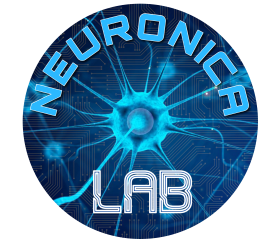Acute kidney injury (AKI) is a common disease that has a variable incidence from 20% to 70% in critical ill patients [1]. AKI is defined as an abrupt reduction of kidney functionality which may have critical consequences for patients. One of the major problems in treating AKI is the difficulty in identifying it on time. Studies and researches confirm that clinicians could carry out compensatory actions if they could identify the onset of AKI in advance; complications could be reduced and complete healing could be possible. The current work has as primary objective to develop a machine learning model that can support clinicians decisions and be able to provide a continuous AKI risk score for patients admitted to any intensive care units (ICU) . The secondary objective is to build a cloud-based architecture that receives, saves and processes incoming data from various devices. This architecture allows improving the predictions of the model due to the possibility of retraining it using data directly stored on the cloud. The current retrospective multi-center study uses data contained in a large dataset of electronic health records developed by Philips Healthcare, the eICU Collaborative Research Database [2]. It contains over 200,000 admissions belonging to 140K patients hospitalised in any types of ICUs between 2014 and 2015 in USA. After the pre-processing phase, a total of 24.749 patients remained for the analysis and only 1% of them were associated with an oliguric creatinine AKI episode during the stay. Starting from them, three independent subsets were created: 70% used for training, 20% for testing and 10% for validation. Two different Neural Networks with several convolutional layers were used to detect patterns characterizing the onset of AKI. The first one uses as input only the diuresis trend. Instead the second network takes as input a combination of urine output trend and a vital parameter such as heart rate, O2 saturation, respiration rate or blood pressures. The results achieved by the predictive model that use only the Urine Output as input reached promising scores and it is very significant for the proposed research; instead, adding the vital signs information did not increase the result in a substantial way. For the implementation of the cloud-based structure, different IBM services were used. On IBM App Foundry was build a Representational State Transfer (REST) server able to receive incoming data from sensors and forward them to other IBM services. IBM IoT Platform was used to monitor failures of different sensors; instead, IBM Cloudant was used to store data. The architecture based on IBM services combines all the strengths of a cloud architecture and could be utilized to decrease the used storage space and cut several costs. [1] Acute Kidney Injury in the Intensive Care Unit By Jose J. Zaragoza and Faustino J. RenteriaSubmitted: November 3rd 2016Reviewed: March 6th 2017Published: July 12th 2017 DOI: 10.5772/intechopen.68348 [2] The eICU Collaborative Research Database, a freely available multi-center database for critical care research. Pollard TJ, Johnson AEW, Raffa JD, Celi LA, Mark RG and Badawi O. Scientific Data (2018). DOI: http://dx.doi.org/10.1038/sdata.2018.178. Available from: https://www.nature.com/articles/sdata2018178
AUTHOR: Dario Crosetto
ADVISORS: Valentina Alice Cauda, Eros Gian Alessandro Pasero
DEGREE COURSE: MAster’s Degree in Computer Engineering
ACADEMIC YEAR: 2020/2021
